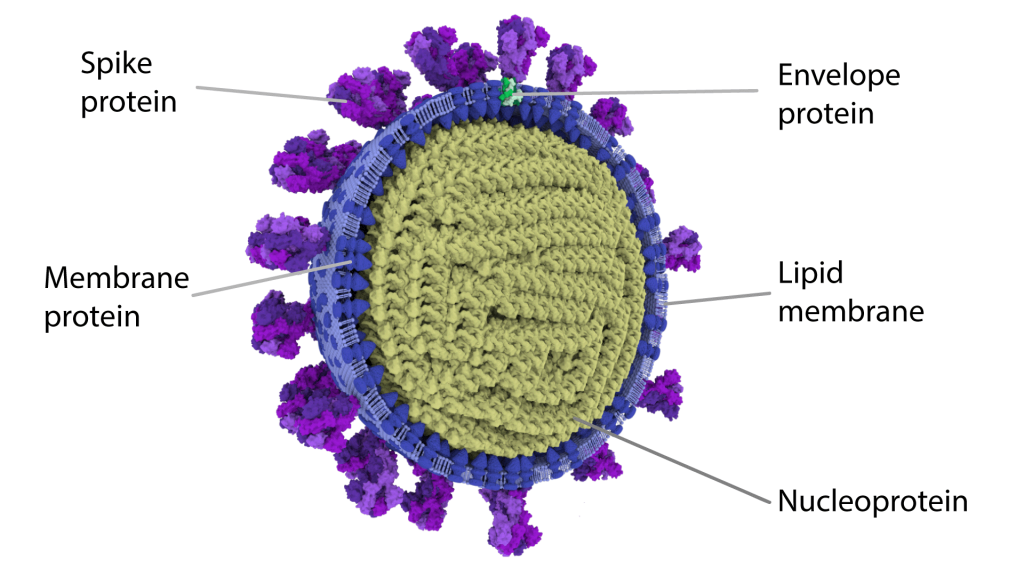As countries around the world race to learn about the SARS-CoV-2 virus that caused the 2019 coronavirus disease (COVID-19) pandemic, scientists have gained more and more information about the viral components that make up infectious particles.
Although every new discovery about SARS-CoV-2 provides scientists and governments with important new information, none of them can provide a clear overview of the virus particles.
Now, the cooperation between experts has created a most detailed 3-D model of the internal and external SARS-CoV-2 virions.
The partners include Annabel Slater, a freelance science illustrator, graduated from Glasgow School of Art-University of Glasgow, with a master’s degree in medical simulation and human anatomy, and also include virus researchers from the University of Glasgow Scientists and experts from the GSA (SimVis) School of Simulation and Visualization.

These eye-catching new images and videos can be seen on the UK Crown Research and Innovation (UKRI) New Crown Virus website.
This interdisciplinary research team has put together a complex scientific puzzle of all the known details of the new coronavirus to date, creating a series of compelling pictures and videos. Although these illustrations do not reveal any new information about SARSCo-V-2, they are one of the earliest and most detailed 3-D representations of virions.
Thanks to the long-term cooperation between the University of Glasgow and the Glasgow School of Art (GSA), it was possible to produce detailed illustrations so quickly.
Illustrations and 3-D models have been provided free of charge for online viewing and downloading, for anyone wishing to visualize SARS-CoV-2. A series of science communication resources, including coloring paper and augmented reality education applications, are already under CVR development and will be released in the near future.
By visually disseminating existing data on the virus that caused COVID-19, the researchers hope that the model will provide valuable resources for anyone who wants to understand the invisible media behind the current pandemic.
Annabel Slater said: “I think making scientific images into 3D opens up a whole new world of interaction, exploration, and understanding. By turning virus particles into tangible and interactive things, we can better understand the viruses. I hope these SARS-CoV-2 virus particle models will help people by making invisible things visible.”
Dr. Ed Hutchinson, a CVR researcher who led the virology research of the project, said: “No single experiment can directly produce detailed images of SARS-CoV-2 virus particles. Not only are they as incredible as all viruses, but they also irregular-each virus particle is slightly different from the others-to obtain detailed information, each component of the virus needs to be studied separately.”
“Fortunately, over the years we have collaborated with students in medical visualization and human anatomy, including Naina Nair, who has developed one of the most detailed models of influenza virus particles. These viruses are also very irregular, Nair later found the use of these models for scientific communication.”
“When the current pandemic began, Annabel Slater contacted us and asked if we could cooperate on the SARS-CoV-2 virus particle model. As a graduate of the MSc project, she was able to quickly grasp the required method of establishment of the virus model, and together with us, interpret a set of data that combines the ‘missing information’ in the latest SARS-CoV-2 research and related virus research.”
Reference
- Detailed 3-D model of SARS-COV-2 revealed
- Coronavirus: the science explained
- SARS-CoV-2: A new song recalls an old melody